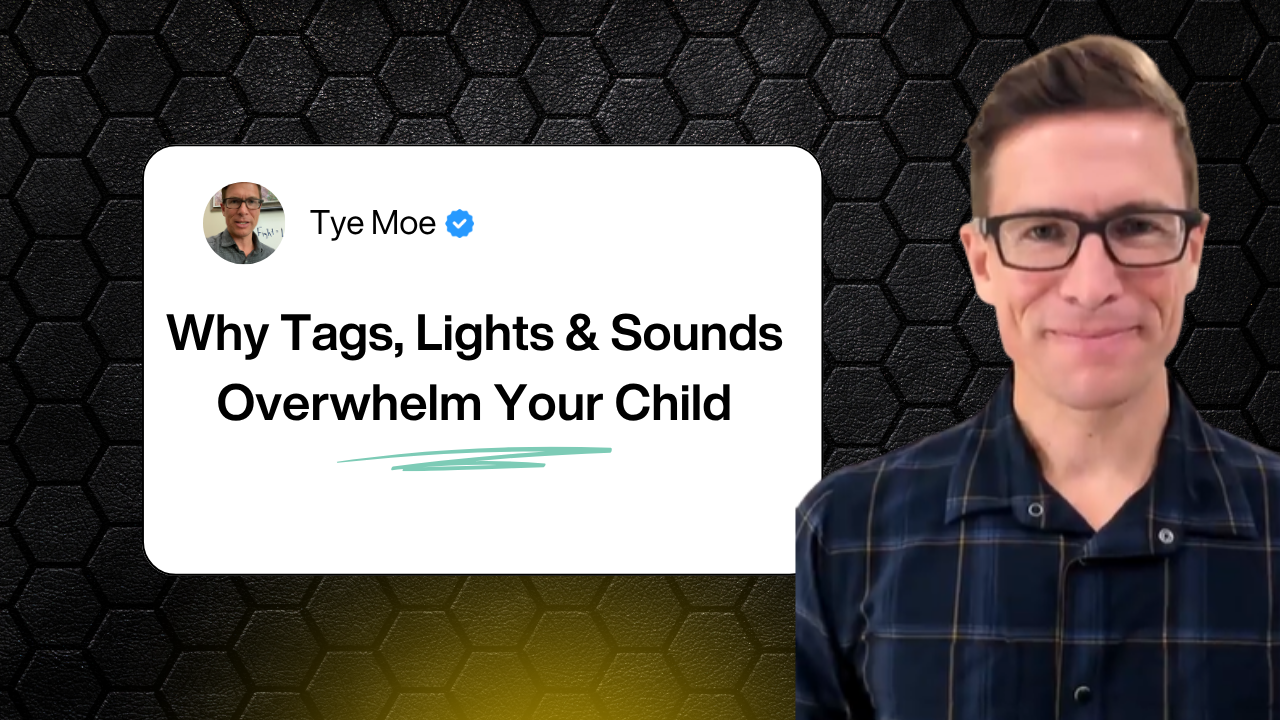Your child is melting down at birthday parties while other kids are laughing and playing. The tags on their shirt might send them into a spiral. The sound of a vacuum cleaner feels like a fire alarm to them.
And you — you’re exhausted. You’re constantly walking on eggshells, trying to prevent the next meltdown, wondering if you’re doing something wrong. Some days you worry you’re being too accommodating. Other days, you can feel the looks from other parents — as if they’re silently judging, thinking your child is just “misbehaving.”
But here’s the truth that most people never tell you:
Your child isn’t being difficult. They’re not trying to defy you.
Their nervous system is simply experiencing the world differently. 💛
It’s Not Behavioral. It’s Neurological.
When your child reacts to sounds, textures, or lights more intensely than others, what you’re seeing isn’t bad behavior — it’s a nervous system in overdrive. Their body is taking in information from the world and processing it as if it’s a threat.
That’s why so many parents hit a wall with traditional advice like “They’ll grow out of it” or “Just be more consistent.” These kids aren’t choosing to melt down. Their brain is flooded — and it doesn’t yet have the capacity to filter, organize, and respond calmly.
Augie’s Story: When Sensory Overload Isn’t Defiance
One of the families we worked with, a mom named Sarah, came to our office completely drained. Her four-year-old son, Augie, was having intense daily battles over socks, shirts, and even getting his hands messy. She told me, “He’s just so defiant lately. It’s a fight from morning to night.”
But as we dug deeper, I noticed something important — Augie wasn’t being defiant at all. His brain was overloaded. Every texture, sound, and sensation felt like too much. After we began working to regulate his nervous system, things began to shift quickly.
Within a few weeks, Augie put on a shirt he had refused to wear for months — all on his own. He started putting his head underwater during swim lessons. A few months later, his teacher said he was friendlier and calmer.
What changed? His nervous system wasn’t stuck in fight-or-flight anymore. Once his body could process sensory input without panic, his true personality started to shine through.
What’s Actually Happening Inside Your Child’s Brain 🧠
Think of your child’s brain like an air traffic controller. It’s trying to manage all the incoming signals — sights, sounds, touch, smell, movement. When it’s healthy and balanced, it can sort and direct those signals smoothly.
But if that system is already under stress — maybe from early life challenges, birth trauma, or chronic health issues — even everyday sensations can feel overwhelming.
Bright lights, certain fabrics, loud noises, or crowded places suddenly feel like too much to handle. That’s when you see the meltdowns, shutdowns, or avoidance behaviors.
Why Traditional Approaches Often Plateau
Occupational therapy and sensory exercises can help, but many families hit a plateau. Why? Because those approaches don’t always address the root cause — a nervous system that’s been stuck in stress mode for too long.
We call it the Perfect Storm:
-
Prenatal stress — a stressful pregnancy can start the nervous system off in overdrive.
-
Birth trauma — C-sections, forceps, or stalled labor can add significant strain.
-
Early life stress — things like colic, reflux, ear infections, frequent illnesses, or medications can keep the nervous system on alert.
When those layers of stress build up, your child’s “stress bucket” fills fast. One extra sound, light, or tag — and they spill over.
Helping Your Child Thrive Again 🌈
The goal isn’t to bubble-wrap your child’s environment. It’s not about avoiding birthday parties or cutting every tag off every shirt forever. It’s about helping your child’s nervous system adapt — clearing out the stuck stress so they can process the world safely and confidently.
When we help regulate the nervous system through neurologically focused chiropractic care, everything changes:
✅ Meltdowns decrease
✅ Sleep improves
✅ Focus and calm return
✅ Confidence blossoms
Because when the foundation (the nervous system) is healthy, every other therapy, activity, and part of life works better.
There’s Hope — Real, Lasting Hope 💫
If your child struggles with sensory overload and you’ve tried everything without real progress, please know this: there’s nothing “wrong” with your child. Their nervous system just needs help finding balance again.
With the right care and support, kids like Augie thrive. They start enjoying birthday parties, sleeping through the night, and stepping into new experiences with confidence.
If this resonates, reach out. Learn about neurological scans, understand what’s happening in your child’s body, and take the first step toward lasting change. Your child is meant to thrive — not just cope. And we’re here to help you make that possible. 💛


